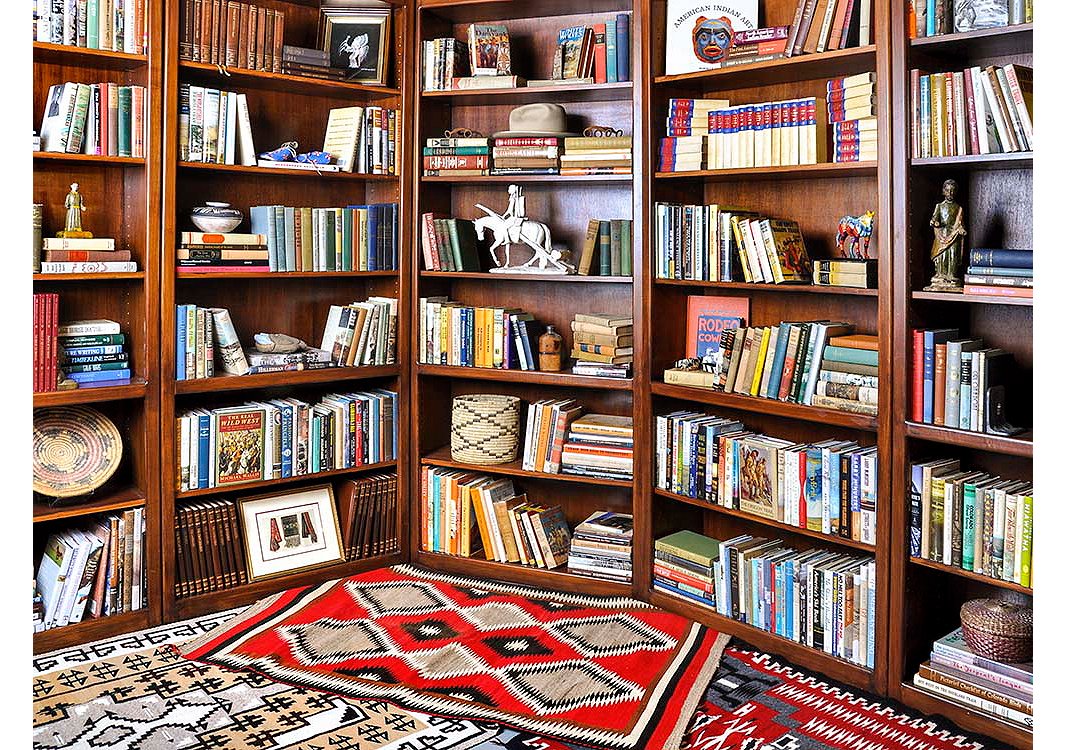Few items in the home hold as much sentimentality—and knowledge—as books. This is something Juniper Books founder Thatcher Wine knows well. His childhood passion for reading and collecting evolved into a business, and today he spends his days designing artful book sets and curating libraries for clients all over the world.
“Books make us feel comfortable,” Thatcher says. “They can really transform a space and make it more inviting. There is that sense of possibility that you could ignore the world out there and just spend time with a book.”
Here, we caught up with Thatcher to get his top tips for building a book collection. Read on for his expert advice, whether you’re filling your first shelf or have a library’s worth of books.
Shop Juniper Books →

Custom jackets in shades of gray give this bookshelf a modern, minimalist look.

A towering shelf in Thatcher’s own home features dozens of sets from Juniper Books.

Vintage leather-bound sets, novels, and a collection of baskets and statuettes fill the shelves of this eclectic library.
Book Collecting 101
Don’t be intimidated. Yes, many shelves and libraries house hundreds and even thousands of books, but Thatcher wants all first-time collectors to remember that it starts small. “It all begins with one book, and then you can build from there,” he says.
There’s no one right way to build your collection. “Certainly, if you have the time and patience, it’s nice to build a collection over time and periodically upgrade and improve your books. But building it all at once can bring a little more coherence to the library, since every book would fit, belong, and be considered in that moment,” Thatcher says.
Consider your values. When curating for clients, Thatcher always asks a few questions: “What are the goals for their home and their bookshelf? We try to put ourselves in their shoes and think about how they would feel looking at their books every day. Do the books tell the world something about who they are?”

Juniper Books’ food-themed sets—like those with the cheeky utensil-accented jackets above—feel right at home in the kitchen.
Always be on the lookout. “Books are everywhere once you start looking for them,” Thatcher says. “We love traveling and going to bookstores of all specialties and sizes. Libraries often sell books, and publishing houses often have bookstores that are awe-inspiring.”
Notice the details—and be picky. “We believe that if a book is worth printing and taking up space in the world, it should last forever,” Thatcher says. “We recommend looking at the quality of everything—the printing, the bindings, the overall design, the book jackets—and ensuring they are worthy of a special place on your shelves.”
Arrange with intention. In styling shelves, Thatcher likes to follow the general rule of having the books take up twice as much space as the accents. “I like to take everything out, add in a few objects, then fill in with books until you have a nice balance and the shelves come alive and dance,” he says.
Know it’s okay to let go. As you collect and rearrange your books, you might find some that no longer feel right on your shelf. Thatcher recommends giving them away. “You can’t read all your books at one time, so they should be doing something while they are waiting for you to come back to them,” he says.

Blocks of color and vertical stacks of books create a fresh, inviting ambience.

“Books make us feel comfortable. They can really transform a space and make it more inviting. There is that sense of possibility that you could ignore the world out there and just spend time with a book.

Sets of books depicting places and prints double as elegant (and unexpected!) artwork.







Join the Discussion